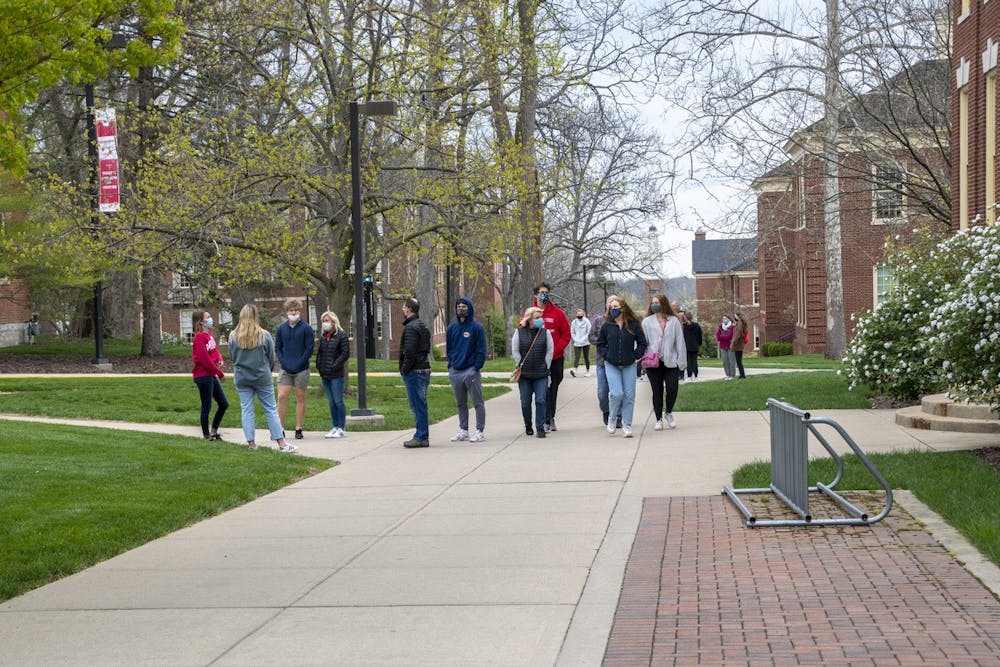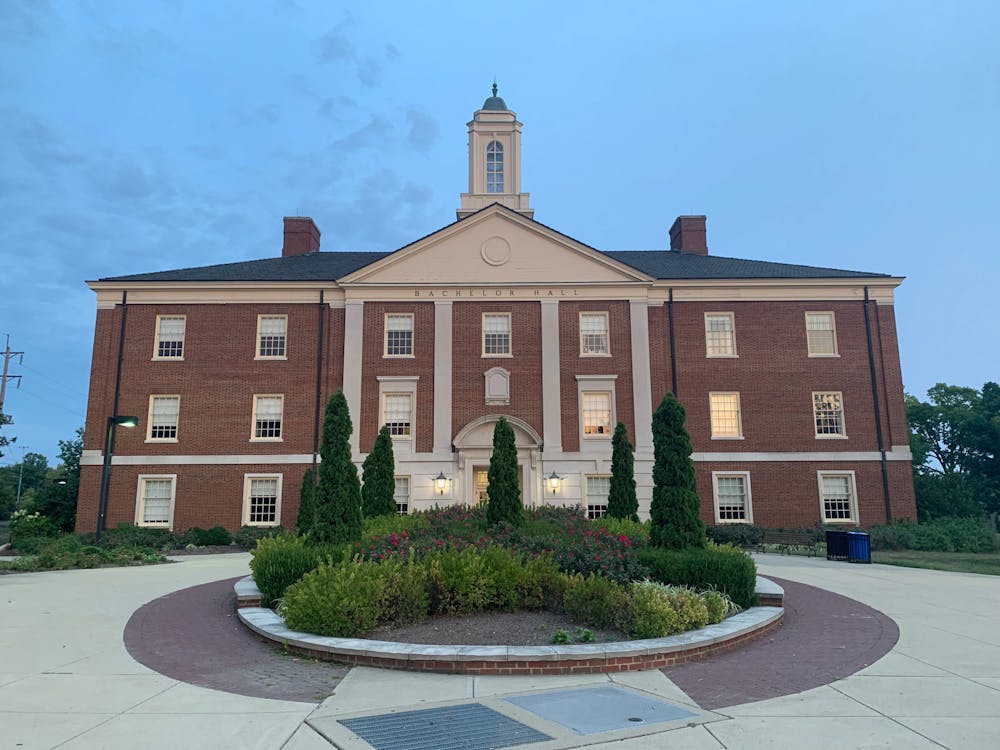Every Monday morning at 9 a.m., junior speech pathology and audiology major Grace Payne walks the same route.
She starts at Shriver Center and makes her way past the sundial and across Spring Street toward King Library. She takes a right and walks between Stoddard and Elliott Halls before walking past the seal, careful not to to step on it. Cutting through Bishop Woods, she passes Armstrong Student Center before crossing the street again and arriving back at Shriver.
As a tour guide, Payne walks this route with her group, often stopping to share a few fun facts about Miami or answer questions from prospective students and their parents.
Payne only leads a few families – 10 people at most.
She said things are improving from last semester when tour guides were still learning new routes and making sure they could safely follow COVID restrictions.
Payne started working as a tour guide this year, and while she’s picked up on things quickly, she knows that it’s not quite the same as training before the COVID-19 pandemic. For tour guides who worked before the pandemic, the adjustment has been a little more difficult.
The whole tour now only takes about 45 minutes, which is half the time a campus tour would take before the COVID-19 pandemic required the Office of Admissions to place restrictions on tour group sizes and routes, said tour guide Manager Andrew Peachman.
“I think that for old guides it's been something that is definitely an adjustment just because it's a new route, and now you're trying to cram this amount of information into a much smaller amount of time,” Peachman said.
In addition to routes being shortened, tour groups are no longer allowed to enter any campus buildings. Prospective students and parents can enter campus buildings on their own time, except residence halls, which are always off-limits.
Payne said the inability to see a residence hall has been the one complaint she’s experienced most on her tours.
“I have to admit, I do feel a little bit bad for some of the students because a lot of people really look forward to the residence hall tours specifically,” Payne said.
Although this is one common disappointment among tour members, Payne said overall, many parents and prospective students seem happy just to be on the tour at all. They now have a unique opportunity to have more one-on-one experiences with their tour guides, something that wasn’t as easy before the pandemic.
Enjoy what you're reading?
Signup for our newsletter
“[The tours] can be very personalized, so that you can really share exactly what it is that that student is interested in [and] really cater it to them,” Peachman said. “So [now] it's all designed for them.”
If visitors are unable to attend an actual tour, they can take a self-guided tour instead. After scanning a QR code in the admissions office, visitors follow the map and can watch informational videos at different locations along the way.
On top of all the restrictions that tour guides and members now face, Miami has seen a drastic decrease in visitors overall. In a normal year, Miami usually hosts around 50,000 visitors, said Associate Director of Admissions Andrew Boehm.
This year, that number has dropped to around 10,000.
While the number of visitors has gone down, Boehm said that the number of no-shows for tours has also been very low, which is a good sign.
“People that are willing to come are coming,” Boehm said. “And we've been getting some very good feedback about just having the ability to have them come on campus and explore.”
Both Boehm and Peachman contributed much of the new tours’ successes to the tour guides, praising their ability to adapt to new situations and make the most of what they can do.
“They have such a great positive attitude and they come to work with so much passion for this job and for the university that it makes it really seem easy, but they are working their tails off,” Boehm said. “They're adapting to these spur of the moment changes, which is never easy, especially when you have to be working with complete strangers … and they just do an amazing job.”




